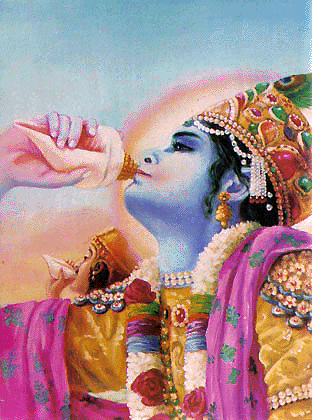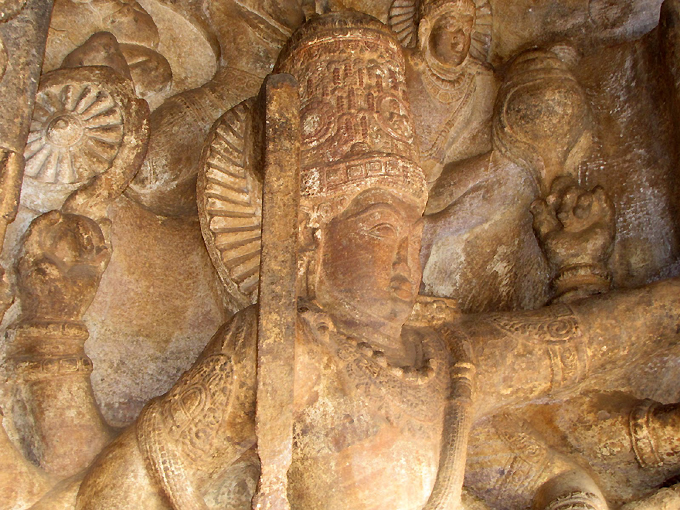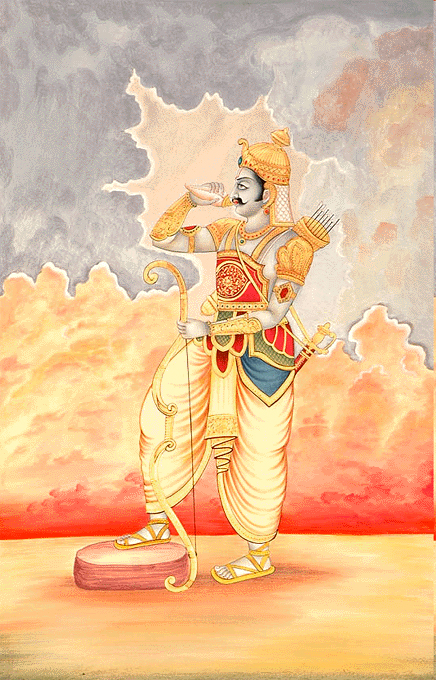
|
|
|
|
BY: SUN STAFF

Jul 02, 2011 — CANADA (SUN) — A study of the historical, spiritual and cultural elements of Vedic design. Today we begin a new topic in the India Design series, on the Conch. Like the lotus, our last subject of study, the conch (or shankha) is an item of paraphernalia that is central to Vedic culture, and is therefore found in many manifested forms in Vaisnavism. Like the Lotus, this design motif has traveled from its ancient Vedic roots to be adopted by religions and cultures worldwide. The conch is worshipped in its most central role as an item of Sri Krsna's paraphernalia on the Battlefield of Kurukshetra, where He blew it to summon the beginning of the great battle, along with Arjuna and Bhima on their conch horns There are many other interesting pastimes associated with Sri Krsna and Visnu in which the conch plays a role, but let us begin with this passage from Bhagavad-gita: Bhagavad-gita As It Is 1.15 pancajanyam hrsikeso "Lord Krsna blew His conchshell, called Pancajanya; Arjuna blew his, the Devadatta; and Bhima, the voracious eater and performer of herculean tasks, blew his terrific conchshell, called Paundra." In his Bhaktivedanta Purport on Bg 1.1.5, Srila Prabhupada writes: "So the particular types of conchshell blown by the different personalities on the side of the Pandavas, beginning with the Lord's, were all very encouraging to the fighting soldiers. On the other side there were no such credits, nor the presence of Lord Krsna, the supreme director, nor that of the goddess of fortune. So they were predestined to lose the battle -- and that was the message announced by the sounds of the conchshells." When associated with Lord Visnu, the conch is also referred to as Pancajanya (Pancajanya), named as one of the Lord's four primary attributes: His shankha (conch), kaumodaki (mace), Sudarshana chakra (weapon), and padma (lotus). These items of paraphernalia are found on a great many temple sculptures, murtis and Deities of Sri Krsna, Visnu, and the Lord's other avatars and incarnations.

Visnu with Chakra and Shankha, Badami The Sanskrit root panca in Pancajanya refers to 'having control over the five classes of beings'. In battle, the blowing of the conch is an awesome statement of power and transcendental authority. In sastra we read that the shankha's spiritual potency is also employed off the battlefield, to warn away demons and enemies, to avert natural disasters being brought on by the demigods, and also to call forward the Lord's devotees for whatever lila task is at hand. In Vaisnava temples, the conch is blown before arotik to dispel the demoniac forces and call the devotees to worship. It is also used as an item of paraphernalia in worship to hold and purify water for abhisheks, etc.

Arjuna Blowing his Devadatta Conch There are many aspects of the conch's physical design that have particular meaning in Vaisnava culture, and we'll discuss these in detail in the segments ahead. Various classifications correspond to the position of the conch's opening (right or left), which also determines the spiral's trajectory. There are other attributes having to do with physical description like size and shape, including the following associations by conch color and varna: smooth white conches are associated with the Brahmans;
| |